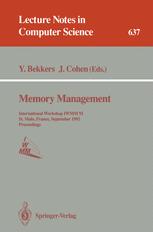- Joined
- Apr 24, 2020
- Messages
- 2,560 (1.76/day)
I'd like a thread for low-effort to medium-effort programming thoughts. If your thought doesn't deserve a topic, feel free to post it here! Any subject, any language, any skill level.
---------
To start off the topic, I'm studying "constraint programming" for a Puyo Puyo AI. Its an obscure match-4 video game with a deeply dedicated community. I have a feeling that I can represent Puyo Puyo boards as a constraint solving problem (similar to 3-SAT). As such, I've been kinda playing around with this (assumed) NP-complete, or harder (#P-complete problems).
Anyone who has completed Comp. Sci. algorithms courses knows that NP Complete (or harder classes: such as #P Complete) are "unscalable", its assumed impossible to invent an algorithm that can solve this problem in a scalable manner. And as an undergraduate, I mistakenly thought that this means that if you ever proven (or assumed) a problem to be NP-complete or harder, that you should "give up" and find another problem.
This was a mistaken thought. NP Complete (and harder) problems scale very poorly. But that means that all problems below a certain size complete almost instantly.
Just because you have an NP-complete problem (or harder) doesn't mean you're hopeless. If you can prove that your problem's scope is limited, then the problem can suddenly become solvable.
Consider Chess exploration or Chess AIs. Trying to solve Chess is infeasible. But if you limit the problem's scope to a certain size, such as "All Board positions with 7 or fewer pieces", it suddenly becomes possible to solve. The 7-man Sygzy Tablebase has been completed, exhaustively proving and solving all possible chess positions of a certain size (7-pieces): https://syzygy-tables.info/
Another chess-example is the Perft problem: calculating and enumerating all possible openings. Perft(11) has been solved in less than an hour on modern hardware, and perft(15) has been claimed to be solved by some people. This problem scales poorly (exponentially more moves every perft(n+1)), but drop down just a few numbers to Perft(10, and you pretty much solve the problem instantly on modern hardware.
In the case of Puyo-puyo, I'm not necessarily trying to fully solve PuyoPuyo, but instead trying to make a super-human AI that can chain better than any human. (Which is rather difficult, humans are really, really good at making chains in this game).
I guess: my initial post is... "NP Complete" or harder (#P complete) problems are not hopeless! You can still make useful programs in the face of these unscalable problems. Learning how to write code that tackles this extremely hard class of problems can be a joy. Your goal is to solve as large of a problem as possible.
---------
To start off the topic, I'm studying "constraint programming" for a Puyo Puyo AI. Its an obscure match-4 video game with a deeply dedicated community. I have a feeling that I can represent Puyo Puyo boards as a constraint solving problem (similar to 3-SAT). As such, I've been kinda playing around with this (assumed) NP-complete, or harder (#P-complete problems).
Anyone who has completed Comp. Sci. algorithms courses knows that NP Complete (or harder classes: such as #P Complete) are "unscalable", its assumed impossible to invent an algorithm that can solve this problem in a scalable manner. And as an undergraduate, I mistakenly thought that this means that if you ever proven (or assumed) a problem to be NP-complete or harder, that you should "give up" and find another problem.
This was a mistaken thought. NP Complete (and harder) problems scale very poorly. But that means that all problems below a certain size complete almost instantly.
Just because you have an NP-complete problem (or harder) doesn't mean you're hopeless. If you can prove that your problem's scope is limited, then the problem can suddenly become solvable.
Consider Chess exploration or Chess AIs. Trying to solve Chess is infeasible. But if you limit the problem's scope to a certain size, such as "All Board positions with 7 or fewer pieces", it suddenly becomes possible to solve. The 7-man Sygzy Tablebase has been completed, exhaustively proving and solving all possible chess positions of a certain size (7-pieces): https://syzygy-tables.info/
Another chess-example is the Perft problem: calculating and enumerating all possible openings. Perft(11) has been solved in less than an hour on modern hardware, and perft(15) has been claimed to be solved by some people. This problem scales poorly (exponentially more moves every perft(n+1)), but drop down just a few numbers to Perft(10, and you pretty much solve the problem instantly on modern hardware.
In the case of Puyo-puyo, I'm not necessarily trying to fully solve PuyoPuyo, but instead trying to make a super-human AI that can chain better than any human. (Which is rather difficult, humans are really, really good at making chains in this game).
I guess: my initial post is... "NP Complete" or harder (#P complete) problems are not hopeless! You can still make useful programs in the face of these unscalable problems. Learning how to write code that tackles this extremely hard class of problems can be a joy. Your goal is to solve as large of a problem as possible.
Last edited:







